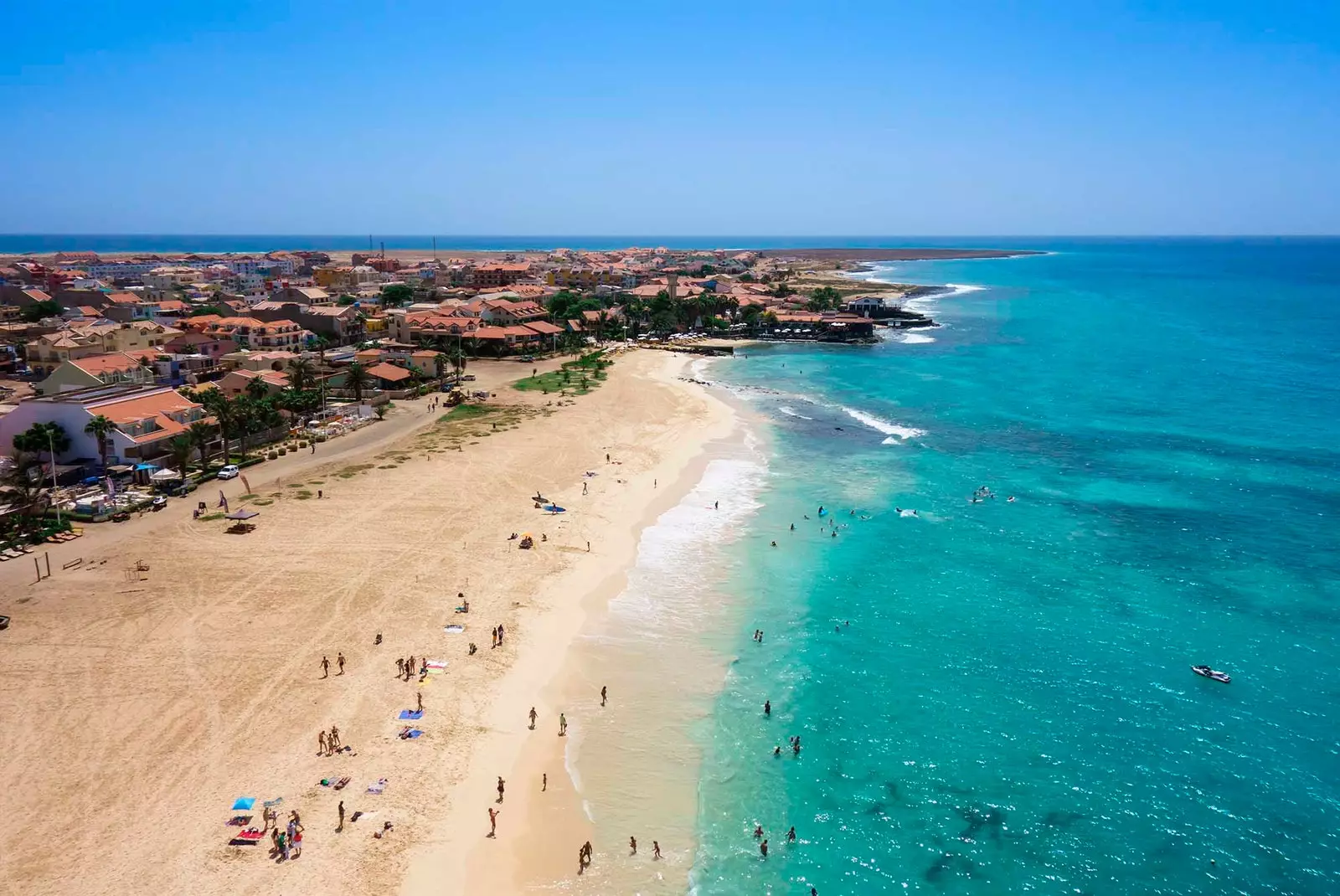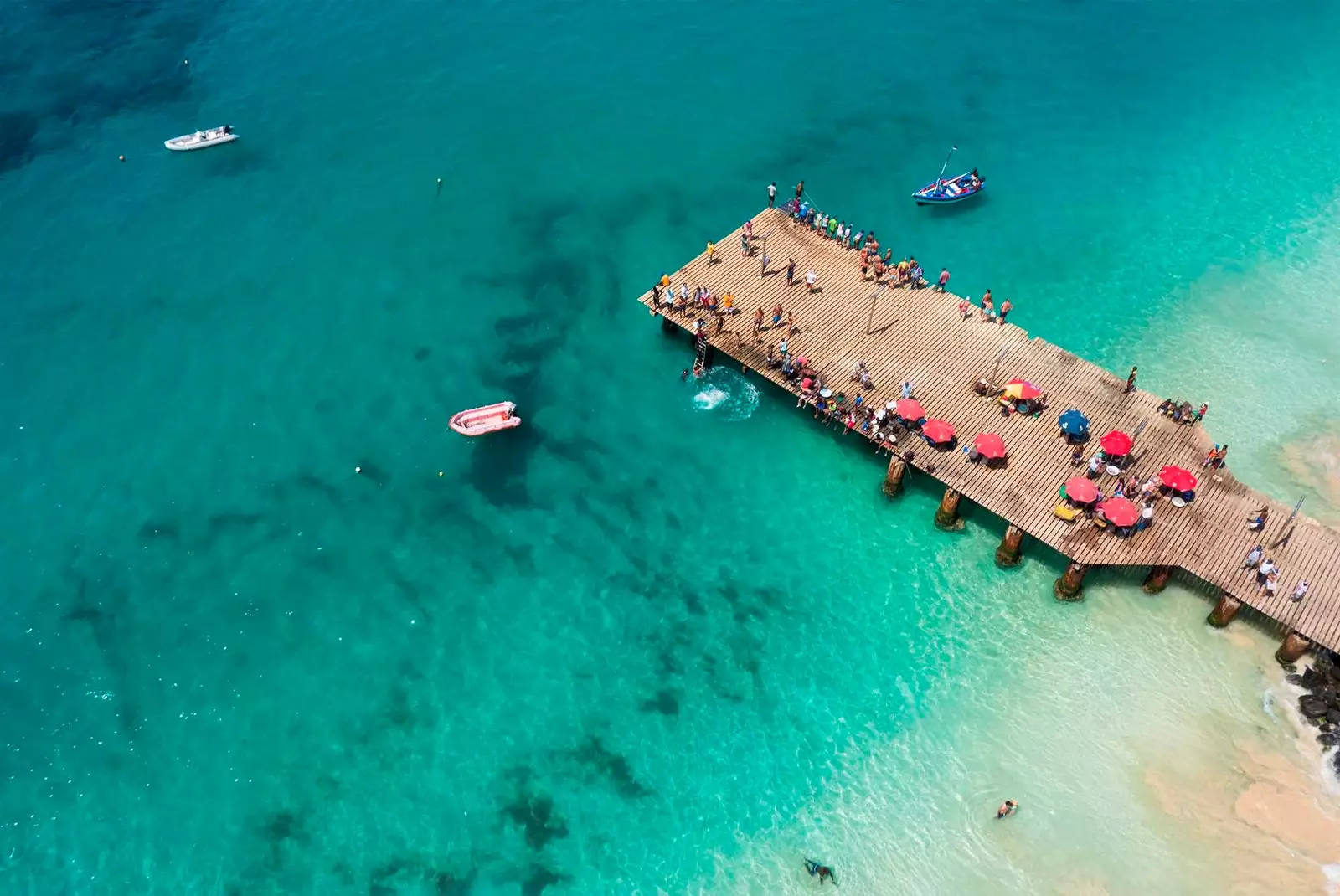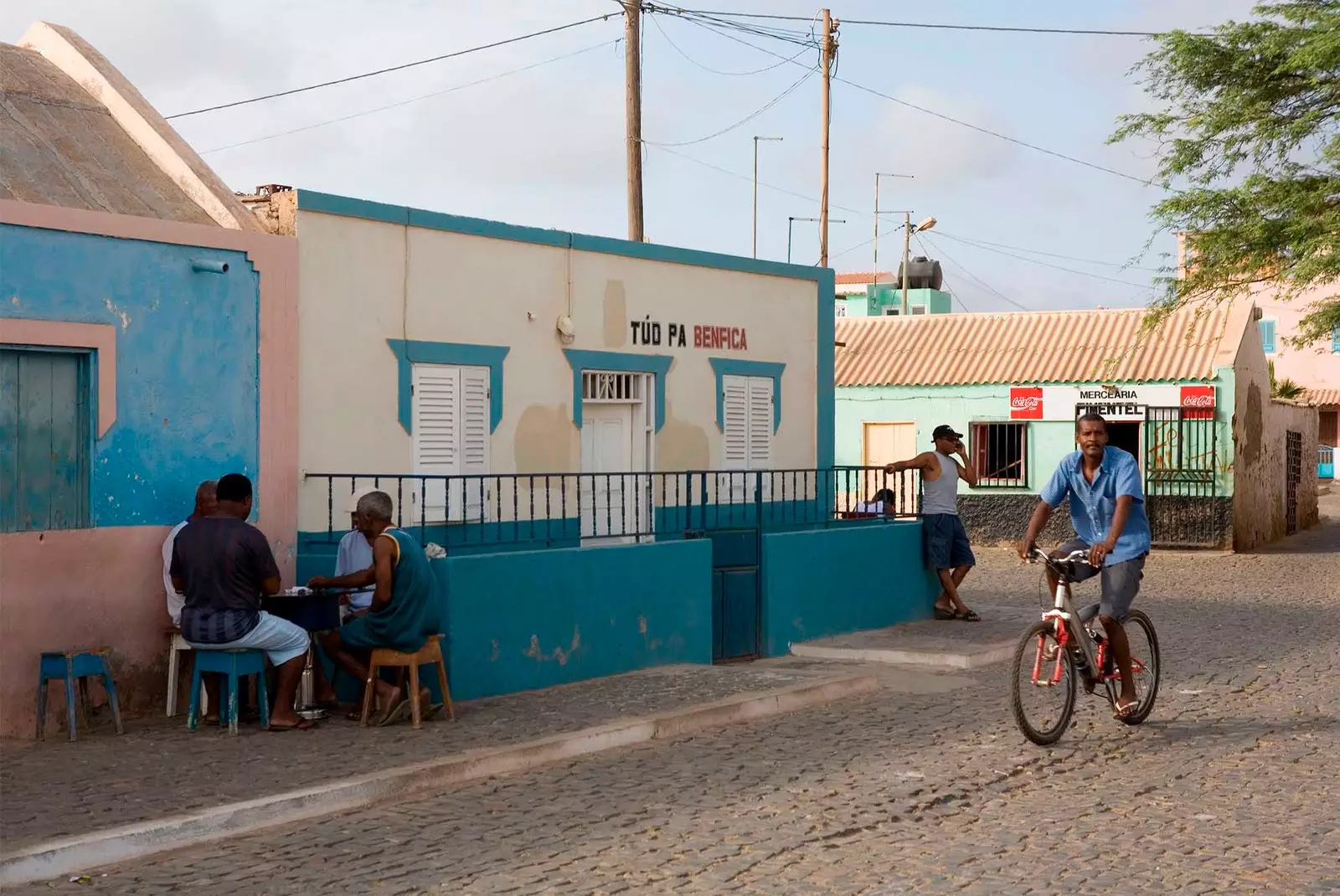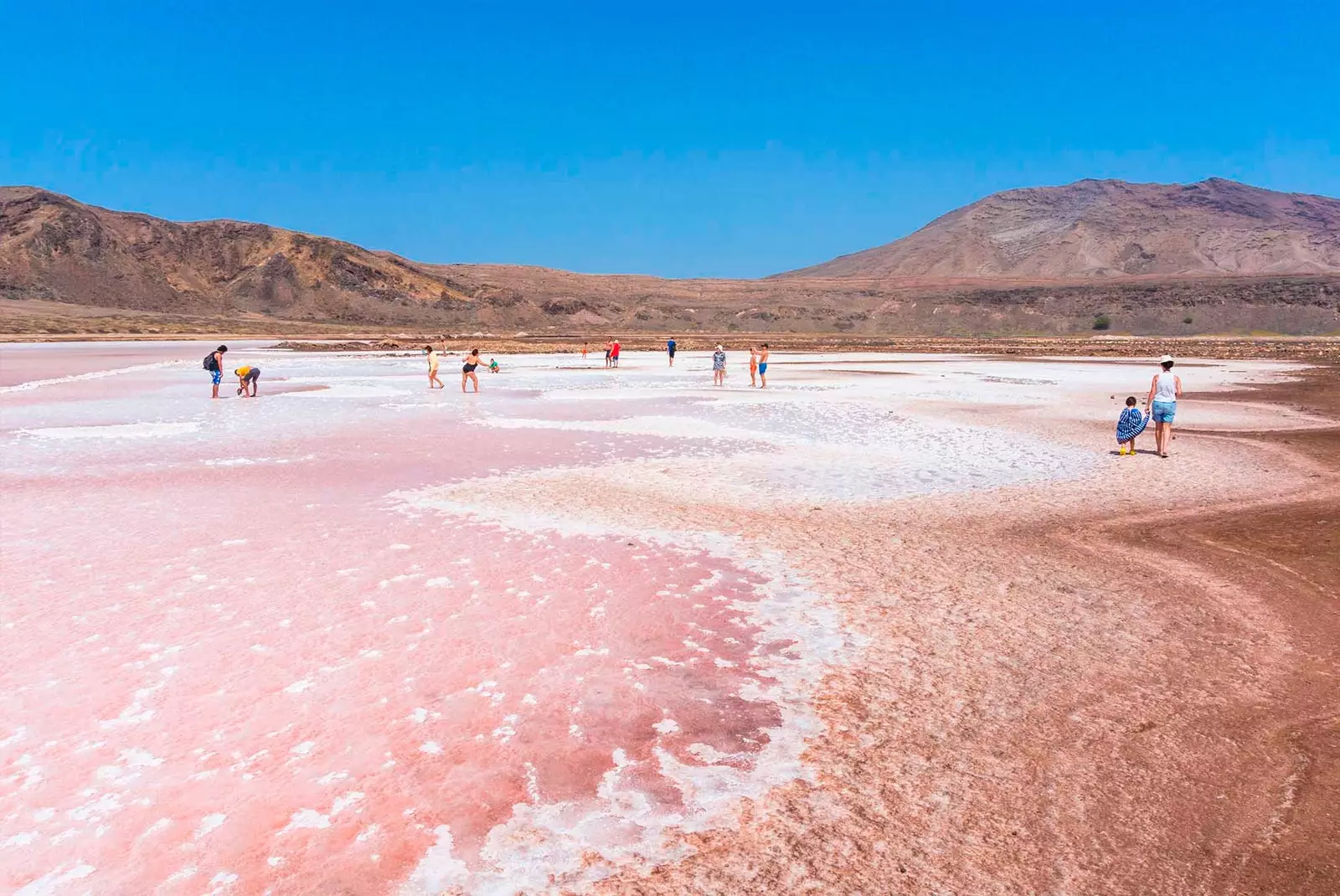
Santa Maria Beach on the Island of Sal
The island of Sal is the most visited in Cape Verde, a country with a Portuguese past that owes its name to a peninsula in Senegal and that has more natives outside its borders than inside . Specifically, according to some estimates, there are a million Cape Verdeans scattered around the world compared to half a million who reside on one of its ten islands.
Of these, the most inhabited is Santiago -where Praia, the capital, is located- but Sal, the third smallest and without natural sources of drinking water, was the first to have an international airport. And today she is the pretty girl of tourism that arrives in the country.
The main reason is its beaches that, in this country, made up of pieces from other places, could pass for Caribbean; not in vain, they share latitude. They are endless and almost desert sand where the temperature of the water does not usually drop below 20 degrees. The best known is the Santa Maria beach which extends to Ponta Preta, passing through Ponta de Sinó bordering the southwest of the island. Of course, the more the beach is exposed, the more the wind reminds us that this is the Atlantic and when it starts to blow it seems that we are in Tarifa or Fuerteventura.
And it is that here everything seems to remember another place. The streets of Espargos, the monotonous capital of the island, exude an African character from which the country cannot be separated. First, by sheer geography - it is located about 600 kilometers from the coast of Senegal -, and second, because, since the Portuguese colonized it in the fifteenth century, Cape Verde was a major world center for the slave trade. A past that its current population, mixed Portuguese and African, does not intend to forget.

The Pontão de Santa María, nerve center of the city
Santa María, the liveliest city on the island of Sal, is torn between incipient tourism and its own essence. Here the low, brightly colored houses on the streets farthest from the sea mix with the resorts at the foot of the endless beach that overlooks the city.
Although there are also hotels, such as the Moorish who have been on the island for decades, ever since a Belgian couple -she, Belgium's first engineer- fell in love with the climate and the character of the people of Sal. The name of the hotel refers to one of the most beautiful and used words of Cape Verdean Creole -a local variety of Portuguese-, without a literal translation into Spanish, but which comes to refer to the Cape Verdean character, its hospitality and kindness. That which, they insist, makes them unique.
That character can be seen, without making much effort, with a simple walk along the beach, where the colorful fishing boats wait on the sand, or along the pier, the Pontão de Santa María, where those who have gone out to fish come to leave the daily catches.
The 184 wooden planks that make up this tiny and improvised port are the nerve center of the city and, when the fishermen unload, it is common practice to come and observe the genre, choose it right there and have it cooked for us in one of the nearby restaurants.

Palmeira, essential stop
Although the real port of Sal is in palm tree , to the west of the capital, and one of the stops on the day tours that cover the most important points of the island. another one is lume stone, where the salt flats that ended up giving the island its name are located.
There, upon payment and after going through a claustrophobic tunnel, we ended up in what used to be the crater of a volcano into which seawater seeped until it became salt flats where, today, tourists float amused at the impossibility of submerging due to the high density of salt.
Where we will manage to immerse ourselves is in Buracona , one of the best visits on the island along with its impressive beaches. The sea and the wind have hollowed out several caves and have created a natural pool where the blue of the water stands out even more against the black volcanic cliff. Although, if there is a place to check this contrast even more, it is a few meters further, where the Blue Eye , a cave 18 meters deep in which, when the sun's rays hit the water at the bottom, an almost impossible turquoise reverberates in the hollow of the rock.
That is another of the great peculiarities of this island: no one understands where the green that gives the country its name came from in a place where not even Pantone could classify such a variety of blues.

The salt flats of Pedra de Lume
